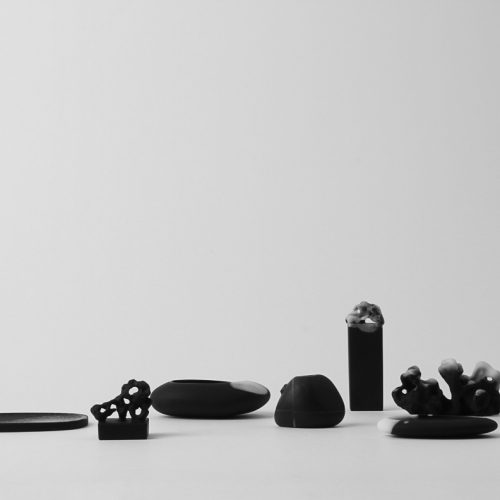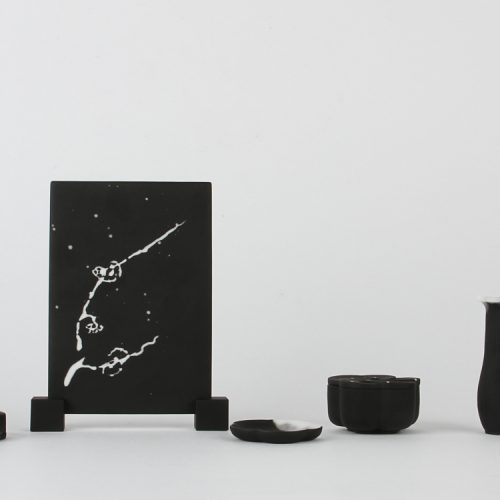樵歌
The Song of woodsman
2015
文房器物,形微体轻,既可供设于案上,又可把玩于掌中,芥纳须弥,是一个内涵丰富的知识载体,根植于传统文化的土壤之中,凝聚了历代文人的智慧与审美。在诸多文房制作的材料中,玻璃以极具个性的审美特质,在历代的文房器物中独树一帜,古代文人常以 “光凝秋水”、“色混晴烟”、“凝霜澄水 ”等词汇来形容玻璃的至美。
传统文人的生活方式现已渺不可寻,所以若能在当下庸扰现代生活中,通过玻璃这种材料表达深层素朴的品质,重新营造一种安静优雅的生活方式, 让人在使用过程中相生相惜,在喧嚣与浮华之外的书房意象中,重构避俗尚雅的文人器韵,在格物怡情中禅意地栖居,那“虽小道,也必有可观者焉”。
Chinese traditional calligraphy implements objects which can either be set on a desk or appreciated in the hand of the user. You could consider it them knowledge carriers that contain plenteous connotations.
Nowadays, if people want to spend peaceful time time in the context of their study, they tend to regain the literati’s demeanor by avoidance of vulgarism and translate this into a matching tasteful and elegant environment. This allows them to be undistracted and to enjoy and dwell peacefully in the poetic study of the phenomena of nature.
设计师简介 About The Designer

Wang Qin/王沁
China/中国
*1978
www.wangqinstudio.com
王沁,1978 年生,景德镇人,现居中国上海,任教于上海大学美术学院。曾多次参加国内外艺术展览,其作品被英国维多利亚及阿尔伯特博物馆、英国布里斯托尔博物馆、德国Alexander Tutsek-Stiftung 基金会、苏格兰皇家博物馆、上海玻璃博物馆及上海世博会中国国家馆等多家机构及个人收藏,2012年获“上海文化新人”称号。
2012 年成立“王沁工作室”,工作室除艺术创作以外,还积极探索文人器物创作研究,并于2013年创立“沁”品牌。“沁”品牌尽将心力投注在玻璃这种媒介,使其具有灵明之气。在抱朴守真的的书房意象中,重构安宁的文人器物,在格物怡情中禅意的栖居。 “沁”的每一道工艺,都在沉默的细节中实现人与物的对话。历经时间的熔铸与沉淀,臻显媒材的自然与性灵。
Wang Qin was born in 1978 in Jing De Zhen and currently resides in Shanghai, where he teaches at the Fine Arts College of Shanghai University. He has exhibited in a number of Chinese and foreign exhibitions, and his works feature in the collections of a number of institutions, including the Victoria and Albert Museum in London, the Alexander Tutsek-Stiftung Foundation in Germany, the Royal Scottish Museum, the Shanghai Museum of Glass and the Shanghai World Expo China Pavilion.
In 2012, he established the Wang Qin Studio, which in addition to being an artistic workshop, also explores creative research and design. In 2013, Wang Qin created his own brand, called Qin. The designs are small, clean and unpretentious, and designed for use in the study while practicing calligraphy, for instance. They involve tea sets, incense holders and receptacles for other small objects.

